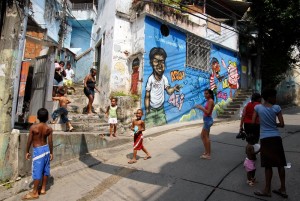 Ever heard the phrase; home is where the heart is? When you think about it, home is more than just a physical dwelling. It provides a sense of comfort, safety and familiarity to most people who are fortunate to have a place to live. This saying resonated with me recently as I read an Urban Times article entitled, “Why Does Place Matter?” The definition of ‘place’ or ‘a sense of place’ can range from a tangible, geographic location, like a home, to the intangible – such as the emotional connection one can feel to the people, venues, and objects in their neighborhood. Understanding the latter is important for urban planners when improving struggling communities, especially in cities.
Ever heard the phrase; home is where the heart is? When you think about it, home is more than just a physical dwelling. It provides a sense of comfort, safety and familiarity to most people who are fortunate to have a place to live. This saying resonated with me recently as I read an Urban Times article entitled, “Why Does Place Matter?” The definition of ‘place’ or ‘a sense of place’ can range from a tangible, geographic location, like a home, to the intangible – such as the emotional connection one can feel to the people, venues, and objects in their neighborhood. Understanding the latter is important for urban planners when improving struggling communities, especially in cities.
The article highlights the complexities of place and provides insightful arguments for why the social life of cities is important. Our social networks often shape our identities, our experiences and how we come to terms with the world around us. Getting a better grasp of people’s shared understandings and what they value in their public and private spaces, informs how urban planners work to preserve that essence through neighborhood upgrades. Though quality infrastructure is important, strong communities really rely on people and their social wellbeing to strengthen them. At the same time, exploring the concept of place can be challenging since most cities tend to have a higher prevalence of transient residents.
City dwellers, particularly those in low-income communities and who are more likely to be permanent residents, have close ties to what they consider their ‘home.’ These populations have historically been left out of these conversations altogether or have been engaged in a very limited context – after major land-use decisions have already been made. Conflict arises when traditionally overlooked neighborhoods begin to experience significant neighborhood change, even if it’s positive, because it attacks an underlying sense of place. Finding the right balance in providing for the needs of a city’s permanent residents, its short-term occupants and its future populations does not have to be competing interests. Promoting full stakeholder engagement along the way provides every resident with a voice in reinforcing his or her place.
Photo credit – Ratão Diniz


About The Author: Pinchina Consulting
More posts by Pinchina Consulting